
Great Britain Wins on the Great Sound
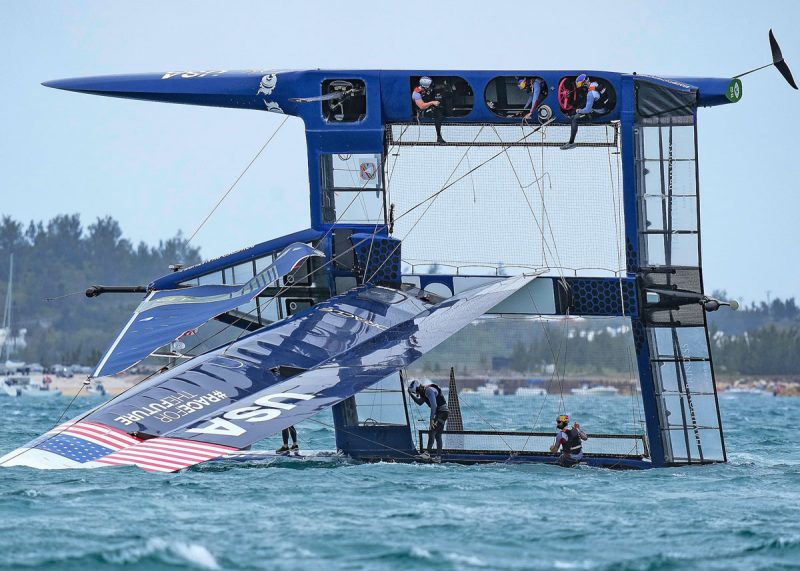
Under a challenging COVID cloud, the organizers at SailGP delivered an action-packed regatta, making the best of the current situation in the worst of circumstances in locked-down Bermuda. Larry Ellison and Russell Coutts’s traveling high-tech foiling roadshow checked off the boxes in most respects.
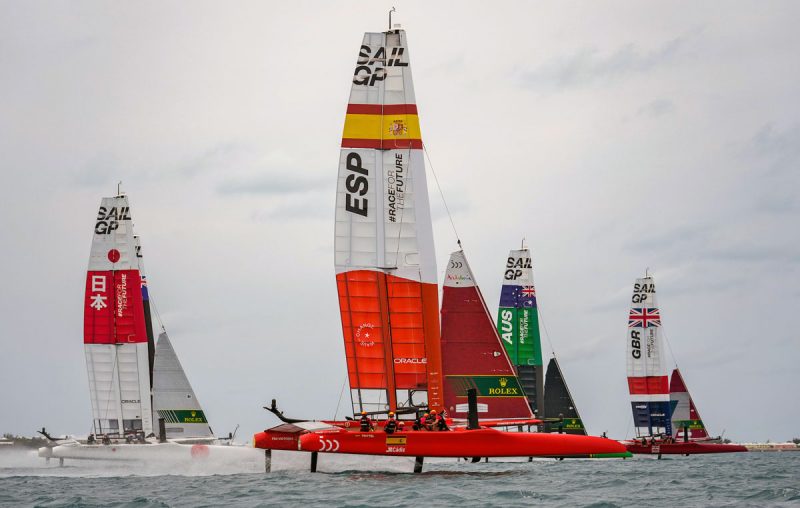
SailGP concluded its first race weekend in more than a year in dramatic fashion with two days of adrenaline-fueled fleet racing. The wind limits needled to the top in a carnage-crazy event. It seemed fortunate that no one was carted away in an ambulance.
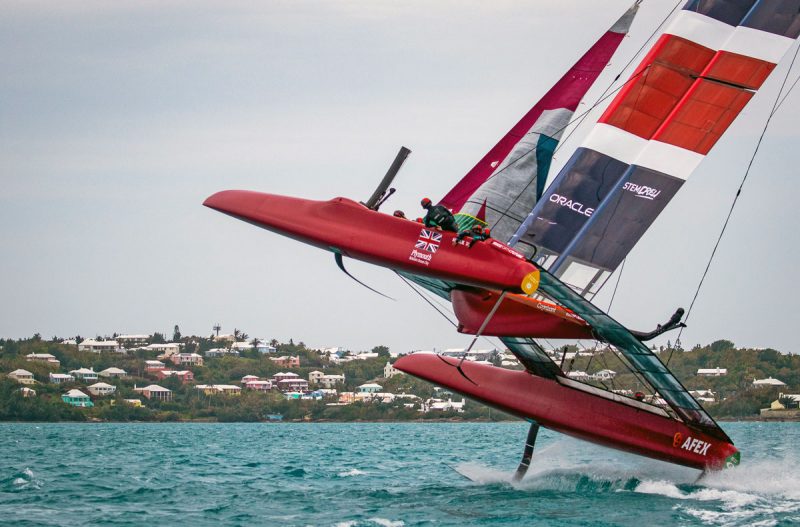
Multiple near misses highlighted the event. In one instance, the French boat would have landed on top of another if not for a last-minute spin away. Nathan Outteridge spectacularly parked his Japan F50 on top of USA, with her Statue of Liberty graphics emblazoned on her fluorescent-blue hull.
In both instances, crewmembers were fortunate not to be in the wrong place at the wrong time. As exciting as SailGP is, it is incredibly dangerous. These foiling catamarans have closing speeds of up to 100 knots. One of the challenges going forward for the event is to find the on-the-water practice time for the teams before someone gets seriously hurt or worse.
The Final Race
Sir Ben Ainslie’s Great Britain team picked up where they’d left off last year by dominating the second day of racing to capture the first round of SailGP’s World Championship, much to the chagrin of Tom Slingsby and his Australia team, which carried the weekend but not the day. It was a great Great Britain day on the Great Sound, as the winner-takes-all podium race between the Brits, Aussies and French determined the weekend’s champion.
It came down to a brilliant boundary jibe by Ainslie as Slingsby struggled to free his boat from GBR’s significant wing wash. Be they 18-meter ‘baby’ wings, the dirty air was still significant enough for the British to take control of the race. The French had fallen back, seeming to allow the two heavyweights to battle it out.
In strengthening winds of up to 25 knots, control was the name of the game. GBR’s wing trimmer Iain ‘Goobs’ Jensen and flight controller Luke ‘Parko’ Parkinson expertly piloted the team’s F50 to keep the maneuvers smooth and to put dirty air on the Australian boat behind them.
The neck-and-neck action continued throughout the race, with the teams splitting at several points to seek better pressure to extend the lead or to find an overtaking lane. The British team managed to keep their noses in front and take the title by just four seconds.
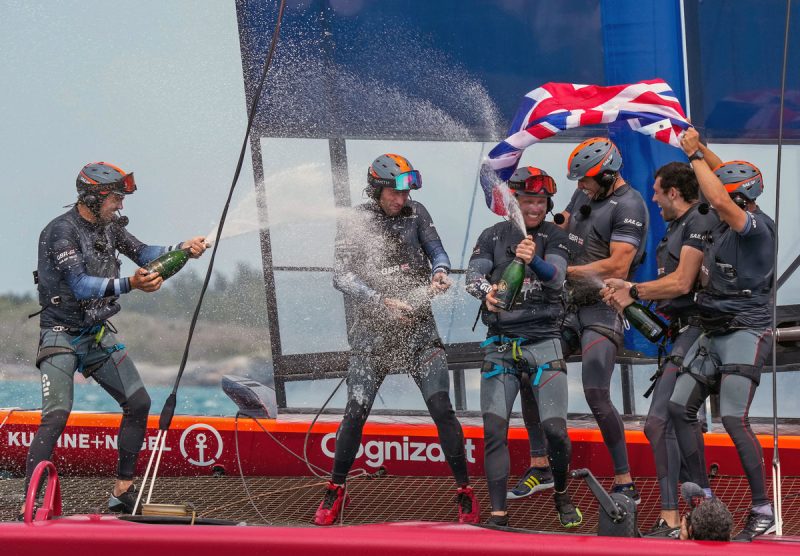
“That was a cracking day of racing. That’s what we want to do, go up against these guys in conditions like this. It was just perfect,” said Ainslie. “I have to give huge credit to the team. We really struggled in the opening day.
“We tried to give the Australians a little luff out of Mark 1 and got quite close to a penalty. Then it was all on that following jibe out of the boundary. The guys nailed it. The guys on board, especially Parko flying the boat when we weren’t 100% in terms of control, did an awesome job.”
The Australians started strong, crossing the start line first at flying speeds of almost 50 knots. “It was an amazing weekend, but I can’t help feeling a little frustrated and disappointed in the final results. That is the way it is with this racing: You have to win the last race,” said Slingsby, skipper of the Australian team. “We sailed amazingly, but we did have a few boat malfunctions in the last race. Ben was ahead of us when they happened.
“We were right on his tail. Then we had a few issues with our board going down. It was raked in the wrong position, and it forced us into a big bow stuff when we went into a terrible tack,” added Slinsgby. “That let him get out to a big lead. When we were able to catch him, we had another little issue, but we couldn’t pass him. Hats off to them — they sailed amazing when it counted.”
Collision and Capsize
The drama of the day came when USA and Japan collided, with the two teams’ boats incredibly attaching to each other. The incident forced both teams to the sidelines, unable to sail again for the rest of the day due to the damage caused to their F50s. Japan actually had to pump water out of the boat to keep it afloat — not to the dramatic level experienced by American Magic in Auckland during the Prada Cup a few months back, though.
“It was obviously pretty unfortunate. We had awesome conditions out there and were having a great race going around the bottom gate sailing upwind on starboard tack,” recounted USA helmsman Jimmy Spithill. “We had given the Japanese a lot of space. They were on port tack, and initially I thought they were going to duck us and attack, but they just took us out.
“It came as a complete surprise,” he added. “Thankfully the crew was all right because we were on the windward side. We sustained damage just trying to separate the boats. Once we were untangled, we thought we could just finish the race, but the boat lost all its power. We lost control of the wing, then the port rudder snapped and sheared off at the top of the stock. We started to bear away, and at that moment it went over.”
Video courtesy Matt Knighton
“Part of the reason the collision happened is there is a certain blindness to these boats and we’re still trying to develop our communication processes,” said Outteridge, who took complete responsibility for the accident and is one of the best technical sailors in the world. “The hard thing is that you can’t work on these things unless you’re on the boat sailing.
“We need to do what we can do for that not to happen again,” continued Outteridge. “We were obviously in the wrong, being on port tack.” (USA had the right-of-way, being on starboard.)
“It was a baptism by fire. We had 14 months off from racing, no training, and I wouldn’t say we felt comfortable or at home,” said Outteridge. “It is going to take time for us to jell. That is the challenge over the next four weeks, because we can’t just get back on these boats and practice. There are no simulators. You basically come, race, and go home. You don’t get to train,” said Outteridge. “It’s completely different from any other sailing competition I’ve ever been a part of.”
“In a few ways it reminds me of motor racing,” said Spithill. “When you’re on tight tracks going fast, sometimes someone is going to take you out and there is not a lot you can do. When we got to the dock, Nathan came straight over and apologized. We’re good mates on the shore, and that shows the kind of guy he is.
“The boats have taken a big step forward from when I sailed them last in 2017,” added Spithill. “Certainly, big upgrades in the foils and the hydraulic wing systems. The speeds are definitely higher. They can cover a much bigger range in performance.
“We really have the best teams in the world out here. The Great Sound in Bermuda is one of the great racetracks for foiling boats. In almost any type of wind conditions you get flat water.” (That’s because of the island and all the reefs.)
The Leaderboard
Ainslie’s team won just a single fleet race across the two-day event, but as is his nature, he put the pedal down when it counted the most to take the top spot on the leaderboard heading into Taranto, Italy, on June 5.
France copped a podium finish. Denmark and Japan ranked sixth and seventh respectively, with New Zealand improving from poor opening-day performance to end the weekend in fifth place. Spain, which finished third in both of Day 2’s fleet races, missed out on qualifying for the Final by just a single point, placing fourth in the event.
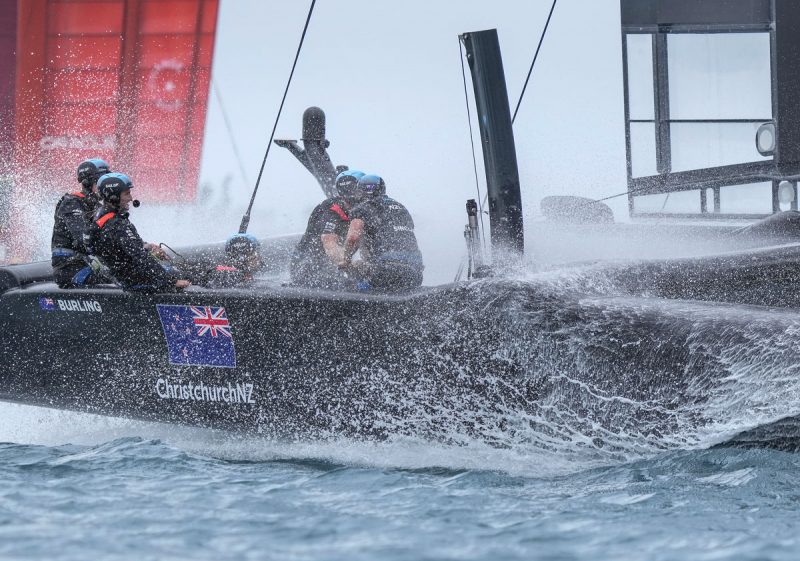
SailGP is an incredible opportunity to bring this kind of extreme stadium sailing close to shore, but regatta director Iain Murray, Coutts and Ellison have some work to do in the coming weeks and months to get the sailors the appropriate training and tools on the water they need to compete safely in this sport.

What has Larry provided us… State of the are racing that we can actually watch, thank you Larry! What is Russel missing… the E-Racing thing is way off the mark. I don’t game (only once did an off-shore race) but with all the telemetry coming off the boats they could make a monster E-Sailing thing that I would pay to be part of. I have neither the time, nor the inclination, to take part in the E-Racing they offer now as it seems to me to be low tech and exclusive.
Hi exciting but don’t risk sacrificing safety on the altar of speed. More training please!